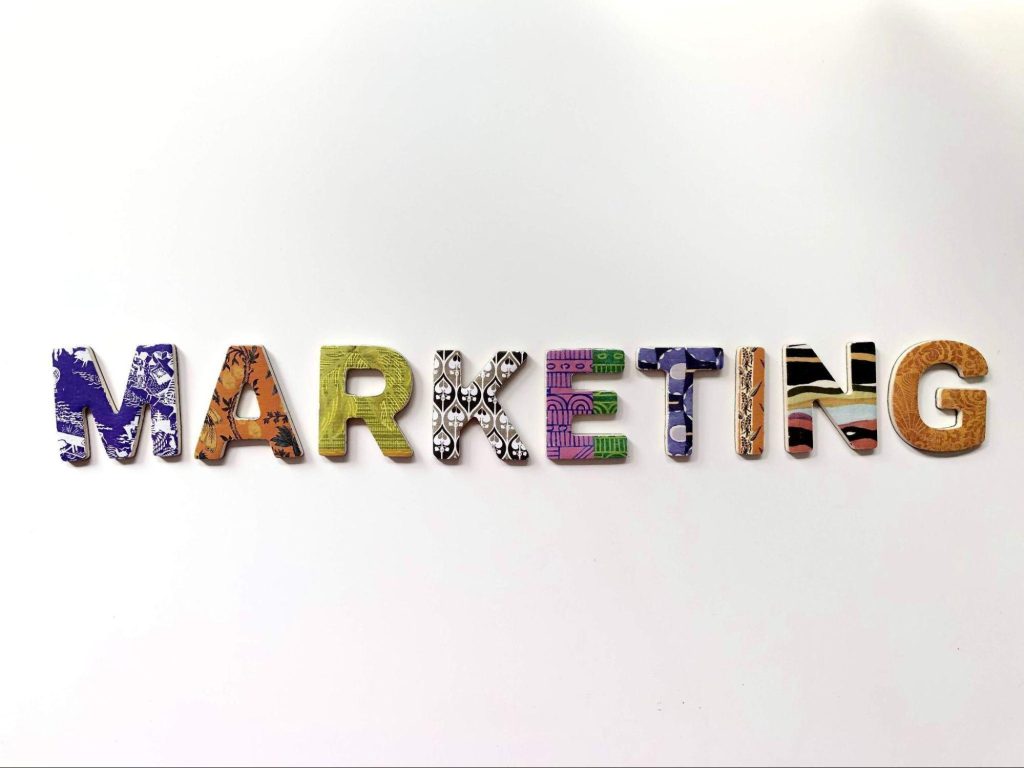Why is Inbound Better Than Outbound?
If you are paying attention to marketing trends, you have heard people throwing around the terms of “Inbound Marketing” and “Outbound Marketing,” but what do you understand? Marketing professionals love to make up the words: If your entire profession depends on authentic individuals to buy things using vocabulary, you would too. But inbound and outbound marketing isn’t just terminology. These terms signify a kind of cultural shift in the absolute concept of how marketing works, especially across channels.
Quick Links
When you talk about the marketers who are filling and generating the top of their sales funnel, most people say that it is outbound marketing.
However, many successful and innovative businesses are actually caressing the skill of inbound marketing. Fortunately, two universal marketing concepts can help the scope and the limits of inbound and outbound marketing. These are two of the most familiar overarching marketing methods, and they each have separate applications and their advantages.
So, this blog will take you to the difference between inbound and outbound along with its benefits and facts that will be able to pick a side with faith.

What Is Inbound Marketing?
This Inbound Marketing is a business procedure that draws buyers by creating valuable content and tailored experiences. While outbound marketing snoops your viewers with the content they don’t always want, inbound marketing forms the domination they are looking for and resolves issues they already have.
Inbound marketing is all about assimilating your viewers to come to you. It is touted as the “improved and new” version of marketing and faithful. It also provides many advantages over outbound. For example, inbound marketers make dual the average website alteration rate.
Inbound marketers use various channels to create “valuable experiences,” which align with the purchaser buying process and, over time, make trust in the Corporate Branding Agency, services, or products, which also includes:
- SEO
- Email Marketing
- Social Media Marketing
- Blogging & Other Content Marketing
- Influencer Marketing
Some Of The Advantages of Inbound Marketing
There are various benefits to inbound marketing which can help you to be definitive if it’s the right blueprint for your organization:
- Inbound marketing is non-invasive — forecast can read your blog posts or haunt a webinar on their free period.
- Inbound marketing blog is educational — it’s mainly designed for a piece phase in the sales funnel.
What is outbound marketing?
This outbound marketing refers to those kinds of marketing where the organization initiates the communication and sends out messages to the observers. Outbound marketing examples hold more traditional forms of advertising and marketing such as radio, ads, TV commercials, print advertisements (newspaper ads, magazine ads, brochures, pamphlets, catalogs, etc.), trade exhibits, outbound sales buzzes (AKA “cold calls”), and email spam.
Outbound marketing looks to get a bit of rap these days. Before the inbound marketing concept came to be, this would have just been apprehension marketing. So in most ways, outbound is deemed ‘the old way’ of doing commerce. While it is a little dated and maybe unsuited for all audiences, outbound still has validity.
The beliefs of outbound marketing are seen as “throw something sticky at the wall and see what paste.” That’s pretty remissive, and to be honest, it takes a little more quickness than that in existence. It’s more like “throw targeted sticky things at specific walls and see what catches.” Regardless, you’re still confused about the place, and only a tiny percentage of the inhabitants are into that.
Some Of The Advantages of Outbound Marketing
Outbound marketing has a few gratuities that should not be neglected:
- Outbound marketing builds brand awareness, helping you reach people who haven’t witnessed your services and products before.
- Outbound marketing can acquiesce immediate results 一 people interested in your services and products are likely to take deportment on your ads and make an investment.
Top Three Differences Between Inbound and Outbound
Well, there are several types of differences between inbound and outbound marketing, but these three are high on the list. Outbound marketing holds dedicated reaching out to users to develop some interest in a product. By contrast, inbound marketing focuses on making and allotting content that pulls people into your website.
Outbound marketing has an approach of typically aggressive wide-sweeping, intending to convert some people. Inbound marketing is commonly focused and subtle for convincing specific bunches of individuals to make a purchase over the period. Here are three main differences at a glance:
- Educating VS persuading
Inbound and outbound have very unlikely aims in mind.
But of course, in the doom, they are both about pushing up the leads. But they both have and follow it in their different ways. Outbound marketing seeks to influence, whereas inbound targets are educating.
This means that outbound marketing talks to the users,” Hey, see this new thing. Do you want this? Then let me tell you why.”, and somehow if this trick does not make any difference that it will turn to “Please buy it, I’ll give you a value if you do.” and “All your colleagues are doing it.”
Inbound marketing is all about asking questions to yourself only like, “How can I be helpful?”. It goes out and speaks to the users, “Hey, you might find these details useful.” and then “Oh, you admired that? How about you deliver me your email, and I’ll send you some more?”. It doesn’t sell, and it continues to enlighten and supply value until the candidate decides that they need to solve that issue. Then, they turn to you for solving that particular case.
- Linear vs. Exponential Growth
There arrives a time for every organization(positively) where you can take an aggregate look at your service or product and go, “Yep, we’ve got it right now. Time to escalate”.
You’re doubtless there right now, which is why you’re trying to determine which type of marketing is adequate for your organization; inbound or outbound. Ultimately, the best election is what works for your customers, but the two practices overlook diverse growth types.
Outbound marketing commonly offers a reasonably linear growth trajectory. And it coordinates very closely with your marketing expenditure. It slogs like this:
You’re a SaaS company, and you’ve deliberately run a LinkedIn InMail campaign. After a month or so of adjusting and tweaking, you’ll have some reasonably predictable measure that will tell you that you will get Y numbers of leads if you spend X. Then it is pretty simple that if you double the X, then it will impulsively double the Y. Obviously, there are some number of other elements that influence this, such as the effectiveness of your ad copy, but the concept stands anyway.
Inbound marketing approaches tend to be more of a long game. You put the money upfront, develop some decent content assets, invest in search engine optimization, and work on a solid email marketing campaign.
- One-Way vs. Two-Way Communication
The customers and users like those brands that communicate like actual humans. Well, yes, you can not see most of the interactions between humans where one interminably yells over each other unless and until anybody starts to do something.
Like this outbound looks like, there is minimal opportunity for two-way communication. However, inbound marketing will encourage the customers and prospects to share content posts with their friends and leave their reviews and discussion below.

This will give the power back in the hands of users, and the brand goes genuine, transparent, and honest. If you think it is a bad or incorrect thing? Then it will turn into a good thing. In fact, brand legitimacy was voted the double most essential thing to millennials, beaten only by constancy discounts.
Two-way communication also gives your organization good growth. It will enable you to pick up back from your users in the way they like
(and don’t like) about what you do. It also allows finding out why people aren’t acquiring from you. Plus, over time, you’ll build deserved assets as shoppers leave third-party reviews and recommendations.
The Final Thought:
You require a form to keep up with the continuously changing marketing landscape, no matter what marketing strategy. This market has helped and guided thousands of enterprise clients to find their inbound and outbound marketing aims by offering new ways to engage with your customers at scale.
In general, inbound offers a more substantial return on investment, a better customer experience, and more organic, exponential growth. Then the more chances of you to prefer Inbound Marketing. If you’re a rationally new organization, or you need to lead fast in this time, then conceivably consider integrating a long-term inbound technique with some shorter-term outbound movements. That should give you the fast flourishing you need right now.
What Is WooCommerce Product Slider and Why Your Store Needs It
Why Do Product Images Matter So Much in Online Stores? When someone visits an online store the…
0 Comments9 Minutes
How to Streamline Your Customers’ Shopping Experience?
The goal for any online store is to make shopping as smooth as possible. When visitors move…
0 Comments8 Minutes
Strengthening Brand-Customer Relationships Through Gamified Loyalty Programs
Creating lasting connections with customers has become increasingly vital as the marketplace grows…
0 Comments6 Minutes
How to Use SEO and SEA Together in Search Engine Marketing
In digital marketing, search engine marketing (SEM) plays a critical role in improving online…
0 Comments10 Minutes
Content Marketing Growth Hacks: Real Shortcuts to Drive Traffic
Are you still lagging in content marketing? Sticking to these old strategies seems…
0 Comments10 Minutes
How to Build a Strong Local Following Using Social Media Marketing
In the days of likes, shares, and stories, local businesses have a golden opportunity to create…
0 Comments9 Minutes
Why WooCommerce is the Best Choice for Your Online Store?
WooCommerce stands out as a top option for anyone looking to build an online store. This platform…
0 Comments8 Minutes
How to Use AI-Powered SEO Tools for WordPress eCommerce
SEO is a critical factor in the success of any e-commerce WordPress store. As competition…
0 Comments11 Minutes








